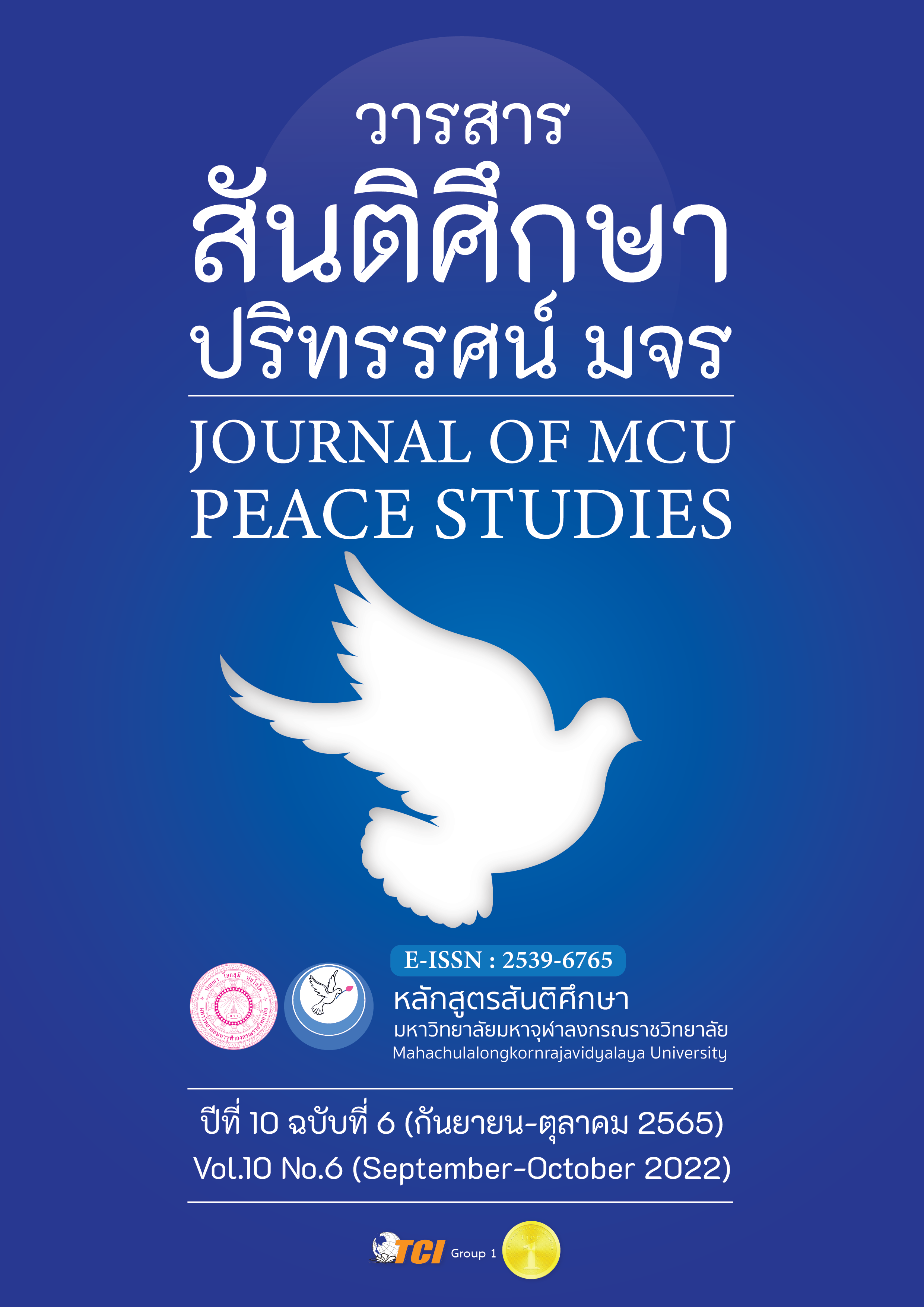แนวทางกลยุทธ์การจัดการและความสำเร็จของ ธุรกิจท่องเที่ยวตลาดย้อนยุคในภาคกลาง
Main Article Content
บทคัดย่อ
บทความนี้มีวัตถุประสงค์เพื่อ 1) เพื่อศึกษาสภาพแวดล้อมและศักยภาพของแหล่งท่องเที่ยวตลาดย้อนยุคในภาคกลาง 2) เพื่อศึกษากลยุทธ์การจัดการธุรกิจตลาดย้อนยุคในภาคกลาง 3) เพื่อศึกษาการชี้วัดความสำเร็จของธุรกิจตลาดย้อนยุคในภาคกลาง 4) เพื่อเสนอแนวทางกลยุทธ์การจัดการและความสำเร็จของธุรกิจตลาดย้อนยุคในภาคกลาง โดยวิธีการวิจัยเชิงคุณภาพ โดยการเลือกกลุ่มตัวอย่างแบบเจาะจง และทำการเก็บข้อมูล โดยวิธีสัมภาษณ์แบบเจาะลึกซึ่งผู้ให้ข้อมูลสำคัญ ประกอบด้วย 1. ผู้ประกอบการตลาดย้อนยุค ได้แก่ ผู้ประกอบการ หรือ ผู้จัดการ หรือผู้ดำเนินการที่อยู่ในพื้นที่ตลาดย้อนยุค 2. พ่อค้าและแม่ค้าตลาดย้อนยุค 3. นักท่องเที่ยวตลาดย้อนยุค ได้แก่ ผู้ซื้อสินค้าที่เป็นนักท่องเที่ยวชาวไทยที่เดินทางมาท่องเที่ยวตลาดย้อนยุค 4. หน่วยงานภาครัฐ ทั้งหมดจำนวน 48 คน ทำการเก็บข้อมูลตลาดย้อนยุค 2 แห่ง คือ ตลาดโก้งโค้ง บ้านแสงโสม (จังหวัดพระนครศรีอยุธยา) และตลาดไทยย้อนยุคบ้านระจัน (จังหวัดสิงห์บุรี) ทำการเก็บข้อมูลตลาดย้อนยุค 2 แห่ง คือ ตลาดโก้งโค้ง บ้านแสงโสม (จังหวัดพระนครศรีอยุธยา และตลาดไทยย้อนยุคบ้านระจัน (จังหวัดสิงห์บุรี)
ผลการวิจัยพบว่า 1) สภาพแวดล้อมและศักยภาพของแหล่งท่องเที่ยวตลาดย้อนยุคในภาคกลาง วัฒนธรรมและเอกลักษณ์ของตลาดย้อนยุค เอกลักษณ์การใช้ภาษาในการสื่อสาร และการแต่งกายย้อนยุค แต่งกายเอกลักษณ์ท้องถิ่นตนเอง สิ่งอำนวยความสะดวก สถานที่ในการนั่งพักผ่อน สิ่งดูดใจของตลาดย้อนยุค ร้านค้าและบรรยากาศภายในแบบย้อนยุคในอดีต ร้านค้าของตลาดย้อนยุค การขายสินค้า อาหาร ขนมโบราณ การจัดกิจกรรมการแสดงละครย้อนประวัติศาสตร์ 2) กลยุทธ์การจัดการธุรกิจตลาดย้อนยุคในภาคกลาง ออกแบบตลาดย้อนยุค เดินถึงกันได้ทำให้นักท่องเที่ยวสามารถเดินผ่านร้านค้าได้ทั่วถึง ขีดความสามารถในการรองรับนักท่องเที่ยว สถานที่นั่งภายในอย่างเพียงพอในการรองรับนักท่องเที่ยว มาตรฐานสถานที่ของตลาดย้อนยุค ความสะอาดของร้านค้า การมีส่วนร่วมของผู้ที่มีส่วนเกี่ยวข้องในธุรกิจตลาดย้อนยุค ในการพัฒนาและปรับปรุงตลาด การประชาสัมพันธ์ตลาดผ่านช่องทางออนไลน์ 3) การชี้วัดความสำเร็จของธุรกิจตลาดย้อนยุคในภาคกลาง การกระจายรายได้สู่ท้องถิ่น ชาวบ้านบริเวณตลาดมาขายสินค้าโดยไม่เสียค่าเช่าแผงขายสินค้า การดูแลรักษาสิ่งแวดล้อม รณรงค์ลดการใช้ถุงพลาสติกและโฟม ความพึงพอใจของนักท่องเที่ยวอาหาร สินค้าโบราณที่หาทานยาก
Article Details

อนุญาตภายใต้เงื่อนไข Creative Commons Attribution-NonCommercial-NoDerivatives 4.0 International License.
ทัศนะและความคิดเห็นที่ปรากฏในบทความในวารสาร ถือเป็นความรับผิดชอบของผู้เขียนบทความนั้น และไม่ถือเป็นทัศนะและความรับผิดชอบของกองบรรณาธิการ ยินยอมว่าบทความเป็นลิขสิทธิ์ของวารสาร
เอกสารอ้างอิง
Amsa-ard, P. (2017). Lesson Learned from Management Process for Development Community Old Market to Success: Khongkong Market Amphoe Bang Pa-in District Phra Nakhon Si Ayutthaya Province. Veridian E-Journal, Silpakorn Universit, 10(2), 623-63.
Bejrananda, T. (2016). Travel Motivations for Visiting Ecotourism Destinations in Border Areas of Chiang Rai. Suthiparithat Journal, 30 (94), 42-59.
Chattukul, A. (2018). Role of Local Communities in the Tourism Markets Development in Buriram Province with Kao Kradong Park Case Study. Academic Journal of Buriram Rajabhat University, 10(1), 167-182.
Department of Tourism. (2018). Tourism Development Strategy 2018-2021 of the Department of Tourism: Department of Tourism. Retrieved June 29, 2019, from https://www.dot. go.th/storage/กลุ่มแผน/5V7jtvCF7hvNiPXPU7MOdT7giHiF1ZbRokN8nBVx.pdf
Kamonsadavkul, S. (2014). Samchuk, The Retro Market: the Politics of Space and the Business of Nostalgia. Institute of Culture and Arts Journal, 14(2), 67-77.
Klaydes, P. (2020). Model of Floating Market Tourist Management Affected to Development of Livelihoods and Culture in Thailand. Journal of Modern Learning Development, 5(3), 200-218.
Klinmuenwai, K. (2018). Guidelines for Support Cultural Tourism Destination at Tha Ma-O Community Mueng Distric Lampang Province, Journal of Liberal Arts, Maejo University, 6(1), 131-148.
Methanai, C. (2019). Motivation to Make a Decision Making of Tourists to Visit Retro Markets in Thailand. Journal of Modern Management Science, 12(2), 37-52.
Ministry of Tourism and Sports. (2015). Thai Tourism Strategy 2015-2017. Retrieved June 3, 2019, from https://www.mots.go.th/ewt_dl_link.php?nid=7114
Ministry of Tourism and Sports. (2017). Strategy, Ministry of Tourism and Sports. No.4. 2017-2021, Retrieved June 3, 2019, from https://www.mots.go.th/ewt_dl_link.php?nid=9689
Phanpanich, N. (2018). Strategic Process of Business Automation Systems that Facilitate the Elderly of Small and Medium Enterprises for the Transition to the Elderly Society in Thailand. Western university Research Journal Humanities and Social Sciences, 4(3), 169-178.
Ployjun, D. (2016). Cultural Capital of The Hmong Hill Tribe with Strategies to Promote Creative Tourism. College of Social Communication Innovation, SWU, 4(1), 6-17.
Ritdej, T. (2015). Guildlines for Developing Tourism Activities and Destination for Sustainable Tourism of Amphawa Floating Market, Samut Songkram Province. Journal of Thai Hospitality & Tourism, 10(2), 18-33.
Sinworn, S., & Viriyawattana, N. (2016). Design Guidelines for Facilities and the Physical Environment to Enhance Tourism of Disabled and Elderly Tourists at the Taling Chan Floating Market. SDU Research Journal Humanities and Social Sciences, 11(3), 97-116.
Somboonpol, U. (2019). Managenment Approach to Success of the Fresh Market Business in Bangkok. Journal of the Association of Researchers, 24(1), 85-98.
Thongupakan, B. (2018). Local Cuisine: Food Security in a Cultural Dimension Case Study of Ban Taling Daeng Community Kanchanaburi. Priness of Naradhiwas University Journal of Humannities and Social Sciences, 5-20.
World Tourism Organization. (2018). UNWTO Tourism Highlights. Retrieved June 29, 2019, from https://www.e-unwto.org/doi/pdf/10.18111/9789284419876


